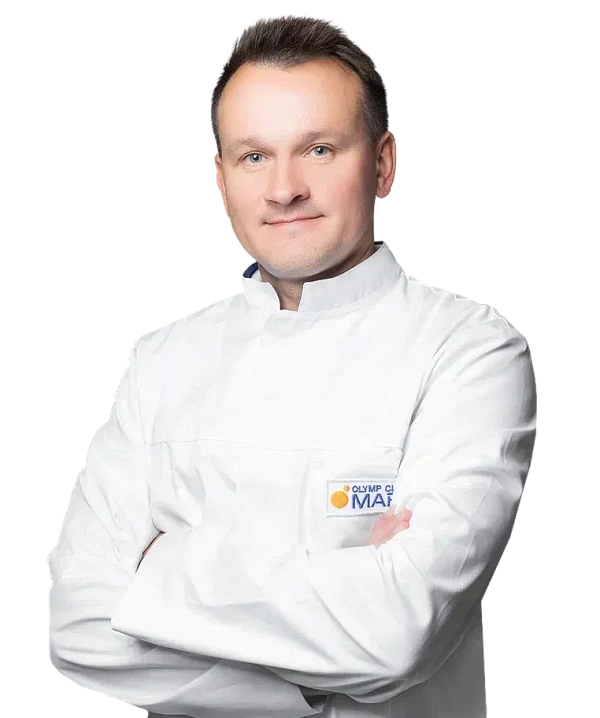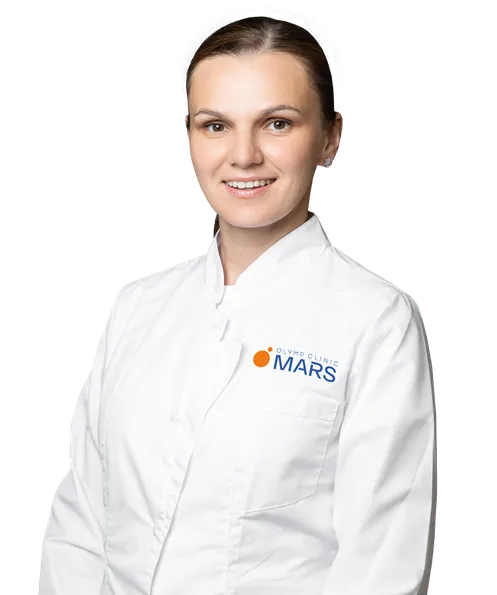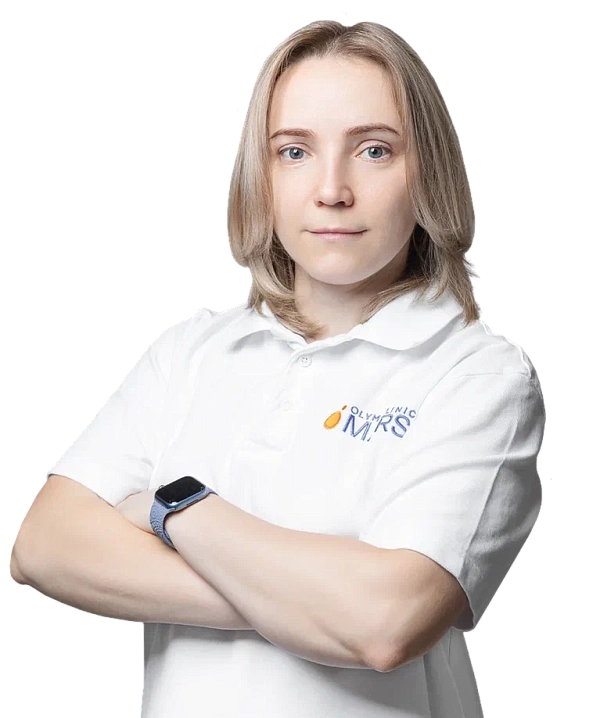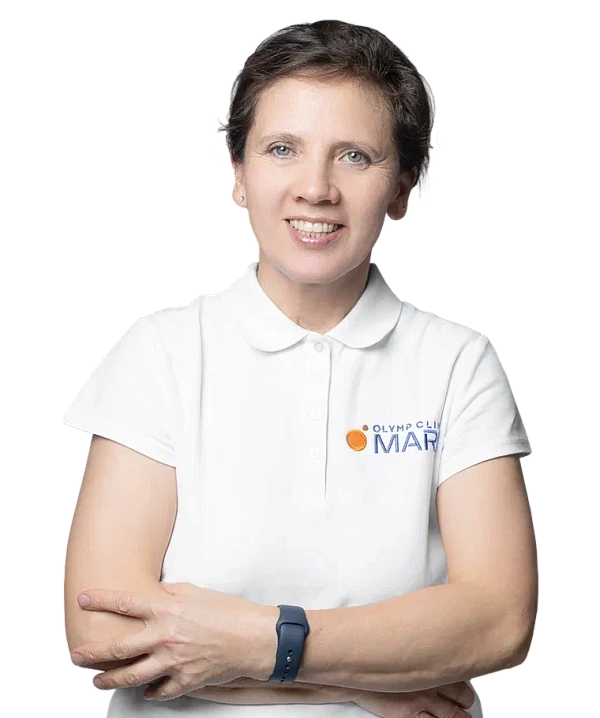Joint mobilization
A manual therapeutic technique aimed at restoring joint mobility, relieving pain and eliminating functional limitations.
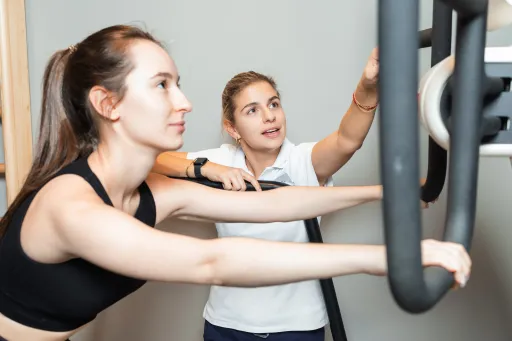
Human joints lose their flexibility over time due to age-related changes, injuries, chronic diseases or insufficient physical activity. This leads to pain, decreased range of motion, and even disability.
Articular mobilization involves a technique in which a specialist gently acts on the articular surfaces, improving their sliding relative to each other. Mobilization reduces intraarticular pressure, relaxes the periarticular muscles and improves blood circulation in the affected area. The procedure is suitable for patients with arthrosis, contractures, degenerative diseases of the spine, as well as for those recovering from injuries.
For successful joint mobilization, it is important to conduct a thorough diagnosis: Anamnesis collection and clinical examination. X-ray, MRI or other instrumental methods. Identification of contraindications. Before the session, it is recommended to avoid heavy food and wear loose clothes.
The patient is positioned in a position that provides access to the joint. The specialist performs rhythmic movements with a certain amplitude and force, aimed at reducing pressure on the articular surfaces, improving their sliding. The procedure may be accompanied by minimal discomfort, but should not cause acute pain. One session lasts 20-30 minutes.
Ergonomic massage table. Exercise equipment and ergonomic pillows to support joints in the right position. Thermal or cooling bags for the preparation of tissues before the procedure.
After the joint mobilization session, the patient is advised to avoid excessive loads on the joint for 1-2 days. Regular performance of light exercises recommended by a specialist will help maintain the effect.
Безболезненность и безопасность— Мягкое воздействие исключает травматизацию суставов. Комплексное улучшение— Повышение подвижности, устранение боли и нормализация кровообращения. Подходит для разных возрастов— Методика адаптируется к особенностям каждого пациента. Профилактика осложнений— Предотвращает развитие контрактур и прогрессирование заболеваний суставов.
Frequently Asked Questions
Which joints can be mobilized?
How many sessions are needed for the result?
Is it possible to combine joint mobilization with other methods?
Didn't find an answer to your question?
You can describe your problem in detail and ask a question to the doctor. He will answer you and help you find a solution
Specialists
Find a SpecialistCandidate of Medical Sciences. Orthopedic Trauma Physician, Chiropractor, Sports Medicine Physician, Physical Therapist. Head of the Rehabilitation and Restorative Medicine Department.
Physical therapy instructor
Doctor of physical therapy and sports medicine, orthopedic traumatologist
Rehabilitation Therapist
Useful information
Cervicogenic headache (CGB)
Secondary headache caused by pathologies of the cervical spine, surrounding soft tissues or nervous structures. The pain starts in the neck and can spread to the back of the head, forehead, and temples.
Myofascial Pain syndrome (MFBS)
A pathological condition characterized by pain in the muscles and their spasm due to the formation of trigger points - areas of increased sensitivity and tension in the muscle tissue.
Medial epicondylitis
A condition associated with overexertion of the flexor muscles of the hand and pronators of the forearm, which attach to the medial epicondyle of the humerus. It is one of the common causes of pain in the inner part of the elbow joint.
Lateral epicondylitis
Inflammation of tendons of the forearm muscles attached to the epicondyle of the humerus.
Similar referral activities
Consultation with a rehabilitologist
The doctor of the department of rehabilitation and restorative treatment is engaged in restoring or compensating for the lost functions of the patient after various injuries, operations and diseases.
High-intensity magnetic therapy (SIS)
The method of physiotherapy, which is based on the effect of a powerful pulsed magnetic field on body tissues, which contributes to pain relief, reduces inflammation and accelerates tissue regeneration.
Techar therapy
A method of physiotherapy based on the use of electromagnetic waves of a certain frequency for a deep impact on the tissues of the body.
Shock Wave therapy (UHT)
A treatment method based on the effect of acoustic shock waves on body tissues.
Low-frequency electrostatic therapy
A method of physiotherapy based on the effect of a low-frequency electrostatic field on body tissues.
Mechanotherapy
A rehabilitation method based on the use of mechanical devices to restore joint mobility and increase muscle strength in patients after injuries and operations on the musculoskeletal system.
How to reach
How to get
From the Belorusskaya metro station of the Zamoskvoretskaya line - exit 4 After exiting the subway, walk through the pedestrian tunnel and climb the stairs. Move towards the railway tracks, go down the stairs immediately after them and walk along the house, then turn right onto 1st Yamskoye Pole Street. At the turn to 3rd Yamsky Pole Street, cross the road at the pedestrian crossing and continue along 1st Yamsky Field Street, after a few buildings on the left you will see Olympus Clinic MARS.
Travel time
9 minutes
Landmark
Olympus Clinic MARS sign
How to get
From the Belorusskaya metro station of the Ring line - exit 2. After exiting the subway, turn left and walk to the pedestrian crossing. Cross the road through two pedestrian crossings and move along the Tverskoy overpass. Go down the stairs immediately after the railway tracks, walk along the house, then turn right onto 1st Yamskoye Pole Street. At the turn to 3rd Yamsky Pole Street, cross the road at the pedestrian crossing and continue along 1st Yamsky Field Street, after a few buildings on the left you will see Olympus Clinic MARS
Travel time
11 minutes
Landmark
Olympus Clinic MARS sign
From the metro station "Tsvetnoy Bulvar"
1 exit to the city, then left to the Garden Ring, at the crossing to the right, crossing the boulevard, one more crossing and at the traffic light to the left. The Olymp Clinic building is located overlooking the Garden Ring to the right of the crossing. Travel time is approximately 9 minutes. Landmark - sign Olymp Clini
From the metro station "Sukharevskaya"
Exit 3 from the metro and 640 meters straight ahead, the clinic will be on the right. Landmark - sign Olymp Clinic
Parking lot map
Exit 3 from the metro and 640 meters straight ahead, the clinic will be on the right. Landmark - sign Olymp Clinic
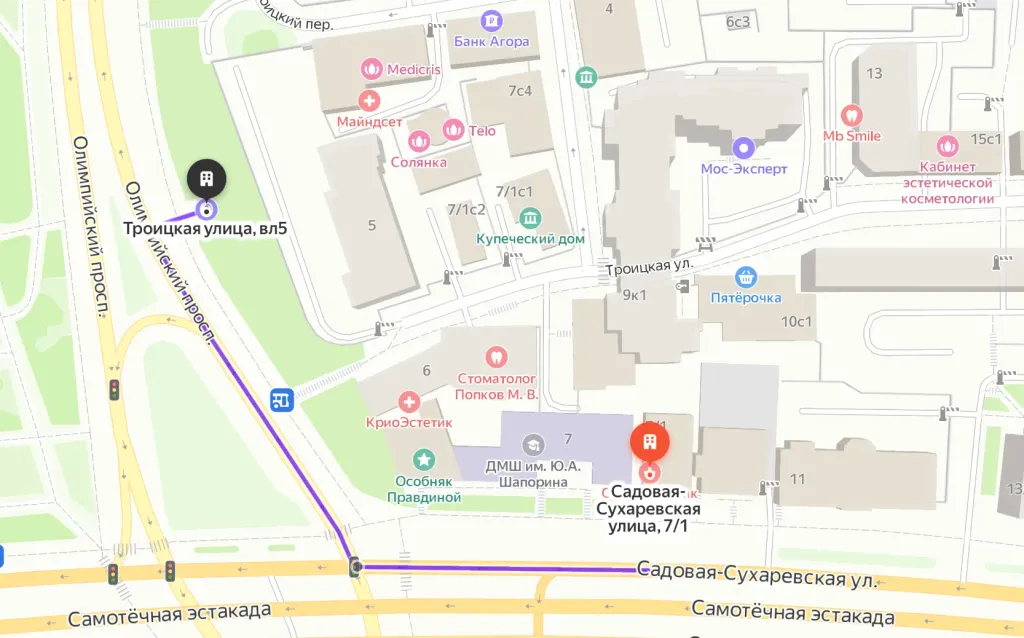
From Sokol metro station
The last car from the center: follow the signs for Exit 5. From the glass doors to the right and go to the end of the passage. Exit to the city by the steps to the left. After exiting the crossing to the street, go straight along Leningradsky Prospekt to the intersection with Chapaevsky Lane. Next, turn right (onto Chapaevsky Lane) and walk to the Triumph Palace residential complex. Entrance to the territory: through checkpoint No. 1, opposite the Vkusville store, you will need to present your passport. After passing through the checkpoint, go up the stairs to the fountain, opposite it you will see our clinic.
Travel time
10-12 minutes
From the Airport metro station
The first car from the center: follow the Exit 2-3 signs. Turn left out of the glass doors and walk to the end of the passage. After exiting the crossing to the street, go straight along Leningradsky Prospekt to the intersection with Chapaevsky Lane. Next, turn left (onto Chapaevsky Lane) and walk to the Triumph Palace residential complex. Entrance to the territory: through checkpoint No. 1, opposite the Vkusville store, you will need to present your passport. After passing through the checkpoint, go up the stairs to the fountain, opposite it you will see our clinic.
Travel time
12-15 minutes
How to get
Entry to the territory is prohibited, but there are free city parking lots around the Triumph Palace residential complex, where you can easily find a place for your car. Free parking area:

